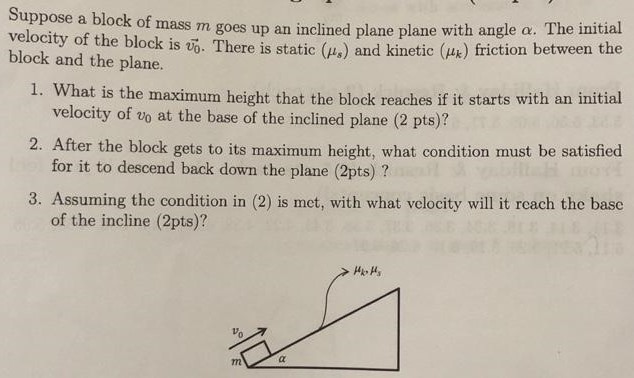Suppose a block of mass m goes up an inclined plane plane with angle α. The initial velocity of the block is v0→. There is static (μs) and kinetic (μk) friction between the block and the plane. What is the maximum height that the block reaches if it starts with an initial velocity of v0 at the base of the inclined plane ( 2 pts )? After the block gets to its maximum height, what condition must be satisfied for it to descend back down the plane (2 pts)? Assuming the condition in (2) is met, with what velocity will it reach the base of the incline (2 pts)?
